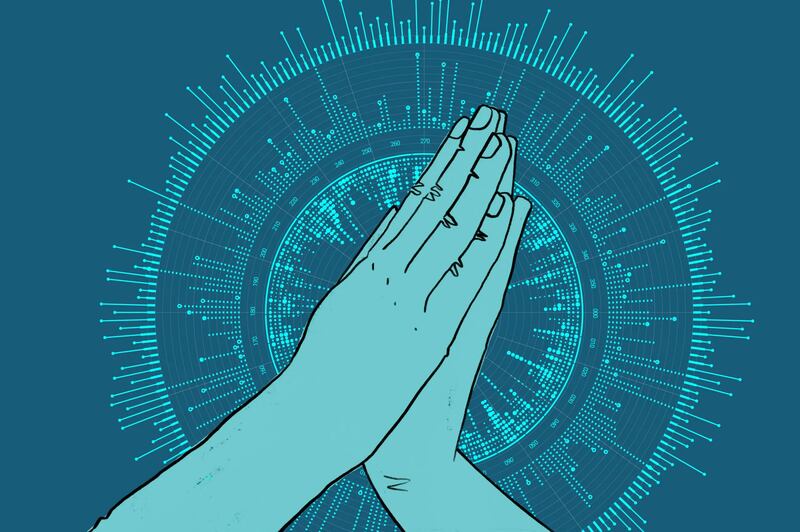The Biden administration is seeking to clarify school prayer rules nearly a year after the Supreme Court ruled in favor of a praying football coach.
In updated guidance released Monday, education officials walk through when, where and how students and teachers can engage in religious expression in public schools, noting that certain limits are needed in order to protect everyone’s religious freedom.
“The guidance issued today is about protecting the right to practice one’s faith or to practice no faith at all that belongs to every American and every student,” said Miguel Cardona, the U.S. secretary of education, in a video shared on Twitter.
The guidance makes it clear that students have a right to pray and participate in other types of religious expression on school property during noninstructional time. They can also organize prayer groups or faith-based clubs and proselytize to their classmates.
During instructional time, students’ religious rights are more limited, but there are still some opportunities to pray.
“Students may engage in prayer or religious expression during instructional time to the same degree they may engage in nonreligious private expression during such time. Students may, for example, bow their heads and pray to themselves before taking a test,” the Biden administration’s guidance says.
Teachers, like students, don’t have to drop their religious identity when they walk through the schools. But they do face more limits than students, as a result of the authority they hold.
Teachers cannot require or otherwise coerce students to pray with them or build time for group prayer into their lesson plans. They also can’t encourage (or discourage) participation in campus prayer groups or praise (or punish) students for praying during their free time.
But teacher do have a right to engage in religious expression during pockets of free time, the guidance says.
“Before school or during breaks, for instance, teachers may meet with other teachers for prayer or religious study to the same extent that they may engage in other conversation or nonreligious activities. School employees may also engage in private religious expression or brief personal religious observance during such times,” it says.
The guidance also notes that teachers can offer lessons on religious freedom, religious diversity and religious holidays, although they should not turn such holidays into a school event.
Praying football coach case
The updated guidance aims to reduce confusion stemming from the Supreme Court’s recent praying football coach case, which the justices heard last year.
In that lawsuit, a coach at a public school fought for — and won — the right to pray on the field after football games in full view of students and community members.
“Conservative justices in the 6-3 majority said efforts to stop the coach from praying on the 50-yard line after games violated the free speech and free exercise clauses of the First Amendment,” as the Deseret News previously reported.
In the ruling, the justices said the coach’s actions did not put problematic pressure on students and therefore did not raise establishment clause concerns.
“This case looks very different from those in which this court has found prayer involving public school students to be problematically coercive,” wrote Justice Neil Gorsuch in the majority opinion.
In previous school prayer cases, the Supreme Court has said that schools cannot arrange for a faith leader to offer a prayer at graduation or require students to participate in a group prayer or group Bible reading during the school day.
The Biden administration references several of these past Supreme Court cases in its updated guidance.
“The Supreme Court’s decisions set forth principles that distinguish impermissible governmental religious speech from constitutionally protected private religious speech,” the guidance says.
How are faith groups reacting?
Faith-related organizations that expressed concern last year about the Supreme Court’s football coach ruling causing confusion have praised the Biden administration’s updated guidance.
“As the administration reaffirms, public schools must be open and inclusive for students of every religion and none. Perhaps most importantly, the guidance emphasizes that public school employees, including teachers and coaches, may not coerce students to pray,” said Rachel Laser, president and CEO of Americans United for Separation of Church and State, in a statement.
Holly Hollman, general counsel and associate executive director of the Baptist Joint Committee for Religious Liberty, said that the guidance strikes the right balance between protections and limitations.
“Students should be free to express their religious beliefs by praying, wearing religious clothing and accessories, and discussing their faith with their peers. Religious groups should be free to meet on school grounds, and educators should teach about religion as an academic subject. Religious liberty in public schools is safeguarded by forbidding teachers and other government employees from leading students in religious exercises while on duty or otherwise coercing students in matters of religion,” she said in a statement.
Other groups were less complimentary. For example, First Liberty Institute said the Biden administration’s guidance, while protective of the rights of public school employees, failed to account for the Supreme Court’s recent updates to its religious liberty jurisprudence.
“We commit to ensuring that any restriction placed on the religious freedom of public school students and teachers by ... outdated cases is restored to the fullest extent required by the First Amendment,” said Keisha Russell, counsel to First Liberty, in a statement.


 alt=Kelsey Dallas
alt=Kelsey Dallas